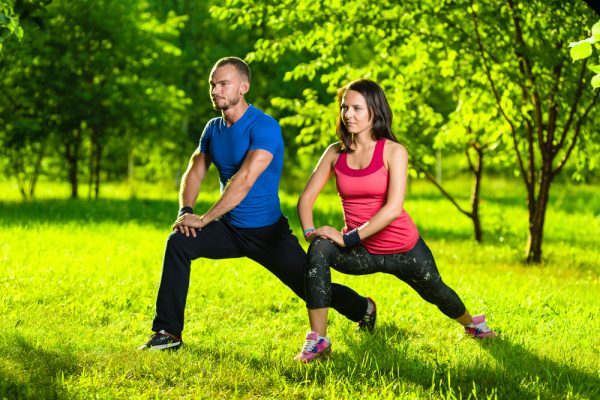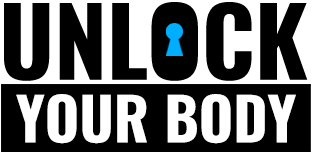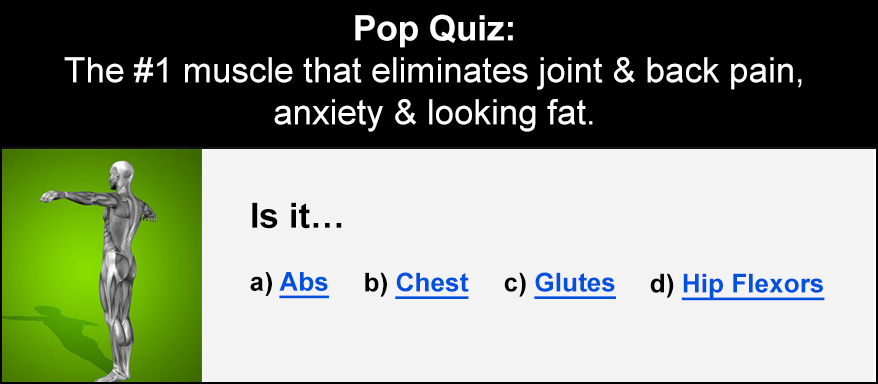
The hip flexors are a group of muscles at the front of your hips that are involved in all kinds of everyday movements from standing to sitting to walking.
These muscles are at risk of huge tightness and dysfunction, however, due to the amount of sitting we do on a daily basis. This puts them at a real risk of affecting posture and long-term movement health.
Read on if you want to live better, keep your lower back healthy, and combat the damaging effects of sitting on your butt!
Hip Flexors: What and Why?
The hip flexors are associated with, unsurprisingly, hip flexion! This is the movement of the thigh towards the body, like pulling the knee to the chest.
This movement is important for two simple reasons:
- It’s tied to core strength and a bunch of other movements in the spine/knee/hip – all very important!
- It opposes the movement of the hip extensors like the glutes, which are also very important
So, we’re going to be discussing the hip flexors for what they do and what they work with/against. The hip flexors are tied into the rest of your body in a way that means they can’t be thought of by themselves, which is part of why hip flexor health is so important!
What The Hip Flexors Do
The first movement, hip flexion, is important for walking, sitting, running, standing, and a bunch of other movements.
If you’re going to move healthily, you need a long range of motion in the hip flexor as well as good strength and control. These all work together and, while you might not need to be super strong at bringing your knee to your chest, this movement is involved in almost everything you do.
These are crucial in addressing lower back pain, which affects 80% of individuals at some point in life.
The spine and hips are the very centre of the body and house some of the most important structures in the body like the spinal cord and other nervous structures. Injuries around these areas are amazingly common and hip flexor dysfunction negatively affects the spine, hip, and knee.
If these sound familiar it’s because they’re the most common areas for injuries (excluding the shoulder/elbow complex) and you’ve probably experienced them yourself!
Finally, the hip flexor is important in hip extension and knee flexion. These are movements you’ll also be performing literally every day, all the time, so the stabilising role of the hip flexor is important.
You don’t just move one side of your body at a time – the extending and flexing muscles are both contracting, together, to produce healthy movement. This makes the hip flexor a crucial part of the exact opposite movement, hip extension.
Your body is an integrated machine: one broken of poorly-moving part can damage a huge variety of other processes/parts. Poor hip flexor health can show up in amazingly weird places from the knee to the spine, so it’s pretty damn important to take care of your hip flexors!
And here is how . . .

Hip Flexors: Loosening Tight Muscles
Step one of better hip flexor health is addressing tightness in these muscles and providing a long, healthy range of motion. If they’re tight, tonic, and short then you’re not going to be able to effectively strengthen or use them.
Loosening the hip flexors means practicing a few essential stretches and movements every day for the absolute best results:
- Chair Hip Stretch
- Kneeling Lunge
- High Floor Bridge
- Standing Hip Flexor Stretch
- Foam Rolling
- Spider Man Stretch
These movements all work towards freeing up the movement of the hip flexor and moving effectively within the mobility you have right now. None of these should hurt – just a little discomfort – and you should progress them slowly.
The key point is to do them more often, not for longer, and not more intensely. The best approach to mobility isn’t to spend an hour stretching every other day, when you remember. It’s to stretch 3+ times a day for 5-10 minutes.
You can spend as little as 30-60 seconds on each of these movements several times a day for the very best results. The frequency and consistency are what make this work!
Hip Extensors: Strengthening Prime Movers
So, you’re working on your hip flexor ROM, what’s next?
During this process, you should also be working on the strength and movement of your hip extensors. These include the glutes as well as a large number of other, smaller muscles.
These are the muscles that work on the opposite side of the body to “open” the hip. These muscles are often under-used but they’re also limited if you have poor hip flexor mobility.
As your mobility in the front of your hip develops, you should also be focusing on strengthening and using the muscles at the back of the hip. This ensures proper overall development and also helps to support the front of the hip while it becomes more flexible.
There are a few key exercises that can be used to promote better hip extension and build a healthier overall hip capsule:
- Best Hip Mobility Drills
- Best Stretches to Open Tight Hips
- Bulgarian Split Squat
- Kettlebell Deadlift
These can be adjusted to your personal mobility and strength capabilities, but they offer different ways of training the knees and hips through hip flexion and extension. This integrated approach is great for both muscle groups and they’re moving through full ranges of motion – which builds and maintains mobility.
Strengthening these muscles will also contribute to better core and spine health. These are key processes for maintaining a stronger, healthier, happier core and hips.
Don’t rush the weight: the key part of weighted movements here is the effective control and posture associated with the movement. This means active core/hip muscles wherever possible, slowly adding weight according to what your technique can handle, and consistent practice!
There’s no rush here, take your time and build a strong, healthy foundation.

3-Dimensional Health
The hip flexors don’t act alone, and it’s not just the hip extensors that need training along with them.
The hip flexors interact with the knee-hip-spine complex in 3 dimensions. Flexion/extension is only one of these dimensions – forwards and backwards (the sagittal plane).
It’s important to train through various different positions and directions for optimal hip health. This means training lateral movements (like the Kosack squat or different lunging variations), as well as rotation with rotating lunges and knee circles.
The hip flexor is healthiest when it is mobile and strong, but also surrounded by other mobile, strong muscles. As you work on these movements, you will notice better strength, mobility, and health in all the muscles of the hip and core. They work together, so they need to be worked together!
Final Thoughts
The hip flexors are one of the most neglected, commonly-dysfunctional muscle groups in modern life. They take a beating from everything from driving to sitting, and this means their health is a remedial and preventative process!
The movements and practices we’ve outlined today are a great way to work on your own hip flexors – and all the things that impact on them.
The keys to better health here are consistency, attention to detail, and a patient approach to better mobility/strength. Try these yourself and commit to improving a little everyday with consistent practice. It’s a slow fix, but you’re in total control of your own body and it’s health!








August 19, 2019
I wish I knew a physical therapist in my area with your backgound. I like your approach.
August 21, 2019
Thank you for your comment. I hope you are able to find a great therapist in your area. In the meantime working through these exercises will help greatly. We also have a product you may find helpful. If you go to our Order page you will see our Unlock Your Hip Flexors program.